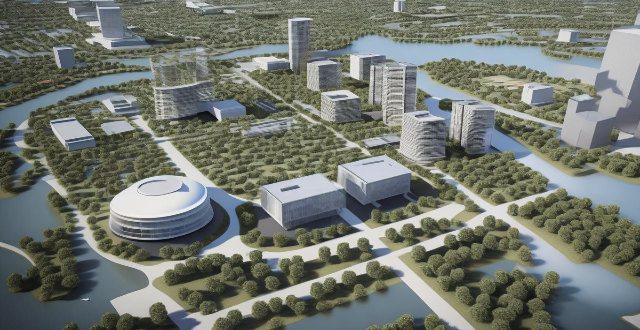Climate zones play a crucial role in the design of energy-efficient buildings, impacting heating and cooling needs, insulation and ventilation, orientation and shading, glazing and daylighting, and roofing and water management. By taking these factors into account, architects and engineers can create buildings that are both comfortable and energy-efficient regardless of their location within different climate zones.

Impact of Climate Zones on Energy-Efficient Building Design
Climate zones play a crucial role in the design of energy-efficient buildings. The following are some of the ways in which climate zones impact the design of energy-efficient buildings:
1. Heating and Cooling Needs
The climate zone of a building determines its heating and cooling needs. For example, buildings located in colder climates require more heating than those located in warmer climates. Similarly, buildings located in hotter climates require more cooling than those located in cooler climates. This means that the design of energy-efficient buildings must take into account the specific heating and cooling needs of the climate zone in which they are located.
2. Insulation and Ventilation
The type and amount of insulation required for a building also depend on its climate zone. Buildings located in colder climates require more insulation to keep heat inside during winter months. On the other hand, buildings located in warmer climates may require less insulation but more ventilation to allow for natural air circulation and cooling.
3. Orientation and Shading
The orientation of a building relative to the sun can significantly impact its energy efficiency. Buildings located in warmer climates should be designed with shading devices such as overhangs or awnings to block direct sunlight during hot summer months. Additionally, buildings located in cooler climates should be oriented to maximize solar gain during winter months.
4. Glazing and Daylighting
The amount of glazing (windows) and daylighting required for a building also depends on its climate zone. Buildings located in cooler climates may require larger windows to allow for maximum solar gain during winter months. However, buildings located in warmer climates may require smaller windows or tinted glass to reduce solar heat gain during hot summer months.
5. Roofing and Water Management
The design of a building's roofing system can also impact its energy efficiency depending on its climate zone. For example, buildings located in areas with high rainfall may require steeply pitched roofs to shed water quickly and prevent leaks. Additionally, buildings located in arid climates may require light-colored roofing materials to reflect sunlight and reduce heat absorption.
In conclusion, climate zones have a significant impact on the design of energy-efficient buildings. By taking into account factors such as heating and cooling needs, insulation and ventilation, orientation and shading, glazing and daylighting, and roofing and water management, architects and engineers can create buildings that are both comfortable and energy-efficient regardless of their location within different climate zones.